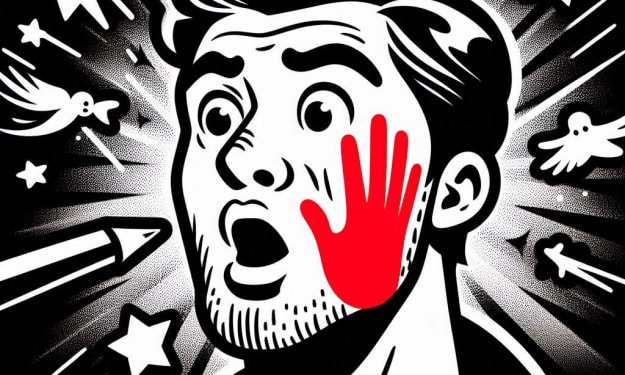6 BEST HOME REMEDIES FOR HIGH BLOOD PRESSURE
HIGH BLOOD PRESSURE

Hypertension, or high blood pressure, is a frequent disorder that impacts the arteries. The force exerted by the blood on the walls of the blood vessels is known as blood pressure. Hypertension refers to a condition in which the body's blood pressure is persistently above normal. Untreated hypertension increases the risk of death from cardiovascular disease, stroke, and kidney failure. The only way to know if you have high blood pressure is to get it examined, as some people with the condition may not have any symptoms at all. Hypertension is typically defined as a blood pressure reading of 130 over 80 mm Hg, where mm Hg is the unit of measurement for blood pressure. Systolic pressure and diastolic pressure are the driving forces behind blood pressure. Blood pressure is measured as systolic when the heart contracts and pushes blood out of the ventricles and into the arteries of the circulatory system, and diastolic when the heart relaxes in between beats. Damage to the arteries and the heart can result from high blood pressure, which forces these organs to function harder and less efficiently. The reason high blood pressure is termed the "silent killer" is because its effects typically go undetected for a while before revealing themselves as major health issues down the road.
6 BEST HOME REMEDIES FOR HIGH BLOOD PRESSURE
1. Regular Exercise
The benefits of exercise for people with hypertension are multifaceted. Some of the benefits of exercising are listed here.
Physical activity reduces high blood pressure by roughly 5 to 8 mm Hg1 on a regular basis. Physical activity reduces blood pressure by relaxing blood vessels and allowing blood to flow more freely.
Strengthen the heart so it can pump more blood with less effort by engaging in regular physical activity. This results in less strain on the arteries and lowers blood pressure.
One study indicated that taking three 10-minute walks a day was more helpful than taking one 30-minute walk a day at preventing future blood pressure increases.
Keeping blood pressure from rising to the point where it becomes high (hypertension) is another benefit of regular exercise for lowering hypertension risk.
In addition to lowering the risk of cardiovascular disease, stroke, and other chronic diseases, regular exercise has been shown to promote general health.
Physical activities requiring sudden bursts of activity or strain, such as weight lifting, playing squash, and running, are to be avoided by those with high blood pressure.
The possibility of a heart attack, stroke, or artery rupture increases by engaging in these activities.
Also, until you've built up to it, you should hold off on high-intensity interval training (HIIT). However, in most cases, people with high blood pressure can benefit greatly by exercising. Aerobic, strength training and stretching are all essential components of a balanced fitness routine.
The greatest exercises for high blood pressure are those that work your heart and lungs moderately, particularly those that target your major muscle groups (arms and legs).
Walking, jogging, cycling, swimming, dancing, and low-impact aerobics are all great examples of safe forms of exercise.
. If you have high blood pressure or any other health issues, you should talk to your doctor before beginning any kind of workout program.

2. Healthy Diet
People with high blood pressure can get a lot of benefits from eating well. Some of the perks are:
Changes to your diet have been shown to help people with high blood pressure reduce their blood pressure.
Eating a diet full of whole grains, fruits, vegetables, nuts, beans, low-fat dairy products, and unsaturated fats can help keep your heart healthy.
The DASH diet, which is low in salt, has also been shown to help lower blood pressure.
Eating a heart-healthy diet can also help you lose weight and lower your risk of heart disease and stroke.
Get nutritious food: Food that is good for your heart is important for controlling your blood pressure and lowering your risk of heart attack, stroke, and other health problems. Fruits, veggies, whole grains, low-fat dairy products, poultry and fish without skin, nuts, and legumes, and non-tropical vegetable oils should all be part of a healthy diet.
If you make it a habit to read food labels, you can make better decisions about what to eat. Keep an eye out for foods with saturated or trans fats, which can raise your cholesterol.
Keep your weight in check: Blood pressure can also be lowered by eating a low-fat diet with lots of fiber, like whole-grain rice, bread, pasta, and lots of fruits and veggies.
Here are some specific things that are good for the heart and can help control high blood pressure
Fruits and veggies: A diet full of fruits and vegetables can help lower blood pressure. They have a lot of potassium, magnesium, and fiber, but not much salt.
Whole grains are a good source of fiber and other nutrients that can help lower blood pressure.
Nuts and legumes: Nuts and legumes are full of protein, fiber, and other nutrients that can help lower blood pressure.
Low-fat dairy products are a good source of calcium, which can help lower blood pressure.
Lean animal protein: Skinless chicken and fish are good examples of lean animal protein. They can be part of a heart-healthy diet that helps control high blood pressure.
Unsaturated fats: Unsaturated fats, like those in nuts, seeds, avocados, and olive oil, can help lower cholesterol levels and reduce the risk of heart disease.
Herbs and spices: Instead of salt, you can prepare food with herbs and spices, which can help lower your blood pressure.
Foods that are high in fatty fats, trans fats, sodium (salt), and added sugars should be limited or avoided
. When you go grocery shopping, reading food labels can help you choose healthy foods.

3. Weight Management
People with hypertension can reap health benefits from maintaining a healthy body weight. Some advantages include the following:
Reduce blood pressure: carrying more pounds might raise blood pressure. Being overweight increases the risk of hypertension in comparison to being at a healthy weight.
It's possible that losing some weight could help bring your blood pressure down.
Defend against cardiovascular disease and stroke. Keeping at a healthy weight has numerous positive effects on one's health. Being overweight places additional stress on the cardiovascular system, raising the danger of hypertension and cardiovascular disease.
Weight loss has been shown to improve general health and decrease the likelihood of developing complications from hypertension such as type 2 diabetes and obesity.
Eating fewer calories than you burn is an effective weight management strategy, but it's best to lose weight gradually, at a rate of half a pound to a pound per week.
Increasing your level of physical activity is essential if you want to lose weight and keep it off.
Fruits, veggies, whole grains, nuts, legumes, low-fat dairy products, and unsaturated fats are all part of a heart-healthy diet that can aid in weight management and lowering blood pressure.
4. Reduced Sodium Intake
If you want to keep your blood pressure in check, you better start saying goodbye to your salty besties. Here are some tips to make your taste buds feel lonely and abandoned by reducing your sodium intake:
Hey there, foodie! Want to avoid feeling like a bloated balloon after your meal? Check out those food labels and aim for less than 600 milligrams of sodium per meal. Trust me, your taste buds and your waistline will thank you!
Cook at home: Cooking at home allows you to pretend you're a master chef while still accidentally adding too much salt to your food. Why settle for boring old salt when you can spice things up with some herb-delicious goodness? Your taste buds will thank you for ditching the bland and embracing the zesty!
Choose options that won't make your taste buds cry salty tears. Go for the low-sodium or no-salt-added options when you're feeling a little salty about your health. Canned veggies, soups, and other packaged foods can still be delicious without all that extra sodium.
Don't be salty, limit your processed foods. Well, unless you're a salt shaker disguised as a human, cutting back on processed foods might be a good idea to avoid turning into a human pickle.
Listen up, folks! Want to keep your blood pressure in check? Well, it's time to ditch junk food and start munching on some fruits and veggies. They're like the superheroes of the food world - low in sodium and high in potassium - ready to save the day and keep your blood pressure under control. So, let's get snacking!
Why settle for boring old salt when you can spice things up with a potassium chloride substitute? It's like adding a little pizzazz to your taste buds without the guilt of sodium.
Behold, my salty friend, I present to you some low-sodium alternatives to your beloved high-sodium foods. Get ready to taste the blandness!
Fish or crabs that are fresh or frozen
Breast of chicken or turkey that doesn't have a skin or sauce
Thin slices of pork or beef
Nuts and seeds without salt
Dried beans, peas, and lentils, such as black beans and garbanzo beans (chickpeas)
Fresh apples, oranges, bananas, spinach, carrots, or broccoli, as well as other fruits and veggies.
Frozen veggies with no butter or sauce added
You can rinse canned veggies that are low in sodium or have no added salt to get rid of some of the sodium.
Low-sodium veggie juice
Bread, bagels, English muffins, tortillas, and snacks made with whole grains
Peanut butter with less salt
Low-sodium foods, cream cheese, ricotta cheese, and mozzarella
Fresh and cold veggies that don't have sauces
Low-sodium veggies, sauces, and juices that come in a can
Chips, pretzels, potato chips, and popcorn that aren't salty
By picking these low-sodium alternatives instead of high-sodium foods like processed meats, canned meals, salty snacks, and convenience foods, you can lower your sodium intake and control your high blood pressure.
5. Stress Reduction
Reducing stress is effective in treating hypertension. Here are some suggestions for relieving stress:
Rest your head: Negative effects on one's mental and physical well-being might result from little or poor quality sleep.
Practice methods of stress reduction. Relaxation and stress relief can be achieved through practices such as yoga, meditation, progressive muscle relaxation, guided visualization, and deep breathing exercises.
Increase the size of your circle of friends by enrolling in a course, signing up for a club, or joining a support group.
Develop better time management skills, and you'll feel less pressure to choose between work and home responsibilities.
Doing regular exercise: Aerobic exercise, often known as cardiovascular exercise, can help reduce blood pressure and build heart muscle.
Eat well: a good diet can aid in stress management and general well-being.
Take time to unwind in healthy ways: Do things that bring you delight, like reading, listening to music, or soaking in a hot bath.
Look at your calendar and to-do lists if you feel overwhelmed. Get help from other people. Lessen the amount of time you devote to pursuits that don't matter to you. Avoid doing things you don't enjoy by saying "no."
It might be difficult to pin down the causes of daily stress and implement solutions, but there are many options available. Some suggestions that came up in my research are as follows:
Get rid of the things that are causing you tension; whether or not you reach an uncomfortable level of mental strain depends on the circumstances and the individual. The way you internalize and rationalize a stressful situation also has a significant role in shaping your reaction to it.
Examine your routines, mentality, and justifications carefully: Your stress level is beyond your control as long as you refuse to take personal responsibility for its origins or maintenance.
Show your appreciation and be happy: Regular exercise is another effective method of relieving stress. Gratitude can alter one's outlook and perspective.
Maintain a healthy equilibrium: Determine which activities are most crucial to you, and give them higher priority.
Eat well: a good diet can aid in stress management and general well-being.
Doing regular exercise: Aerobic exercise, often known as cardiovascular exercise, can help reduce blood pressure and build heart muscle.
Connect with others by signing up for a course, joining a club, or joining a support group.
Rest your head: Negative effects on one's mental and physical well-being might result from little or poor quality sleep.
Take time to unwind in healthy ways: Do things that bring you delight, like reading, listening to music, or soaking in a hot bath.

6. Limit Alcohol and Tobacco
When you have high blood pressure, it's best to reduce your alcohol intake in the following ways:
If you want to lower your blood pressure, one of the best things you can do is to cut back on your alcohol use.
Don't drink more than three drinks at once; doing so has been linked to a temporary elevation in blood pressure. High blood pressure is a long-term effect of excessive drinking.
Moderate drinking entails no more than one drink per day for women and two drinks per day for males. More than three drinks per day for women and four for males constitutes heavy alcohol use.
Stay away from heavy drinking because of alcohol's biphasic effect on blood pressure (BP drops up to 12 hours after consumption but rises after 13).
Alcohol has a high-calorie content and should be consumed with caution because it can lead to weight gain and hypertension.
Following these guidelines can help you cut less on alcohol and keep your blood pressure in check.
Here are some non-alcoholic drinks that can be enjoyed at social gatherings:
Hop sparkling water, house mocktails, and non-alcoholic beers are just some of the alcohol-free drinks that are becoming increasingly common at pubs and restaurants.
Brands such as Kin Euphorics, Ghia, and Three Spirit provide sober alternatives to alcoholic spirits.
As an alternative to alcoholic beverages, try some hot beverages like mulled apple cider, hot toddy mocktails, or other warm beverages.
Non-alcoholic beverages with flavorings: flavored sodas and sparkling waters offer a tasty alternative to alcoholic beverages.
Cacao beverages: Cacao has been consumed as a raw paste in shamanic healing ceremonies for thousands of years. These ceremonies typically involve group sharing, breathwork, and celebratory dance.
CONCLUSION
Finally, different home treatments can be used to control high blood pressure. Changes in food, exercise, and stress management are examples of such lifestyle adjustments that can help. Similarly, consuming more potassium and less sodium can help. When going out with friends, there are many non-alcoholic drinks to choose from. High blood pressure, cardiovascular disease, and stroke are all preventable by following these therapies.
About the Creator
Abby blasius
I am a passionate content creator with a strong focus on health and wellness. While my educational background lies in a Bachelor of Accounting and Finance, it is my innate desire to help people feel good about themselves in mind, body&soul






Comments
There are no comments for this story
Be the first to respond and start the conversation.